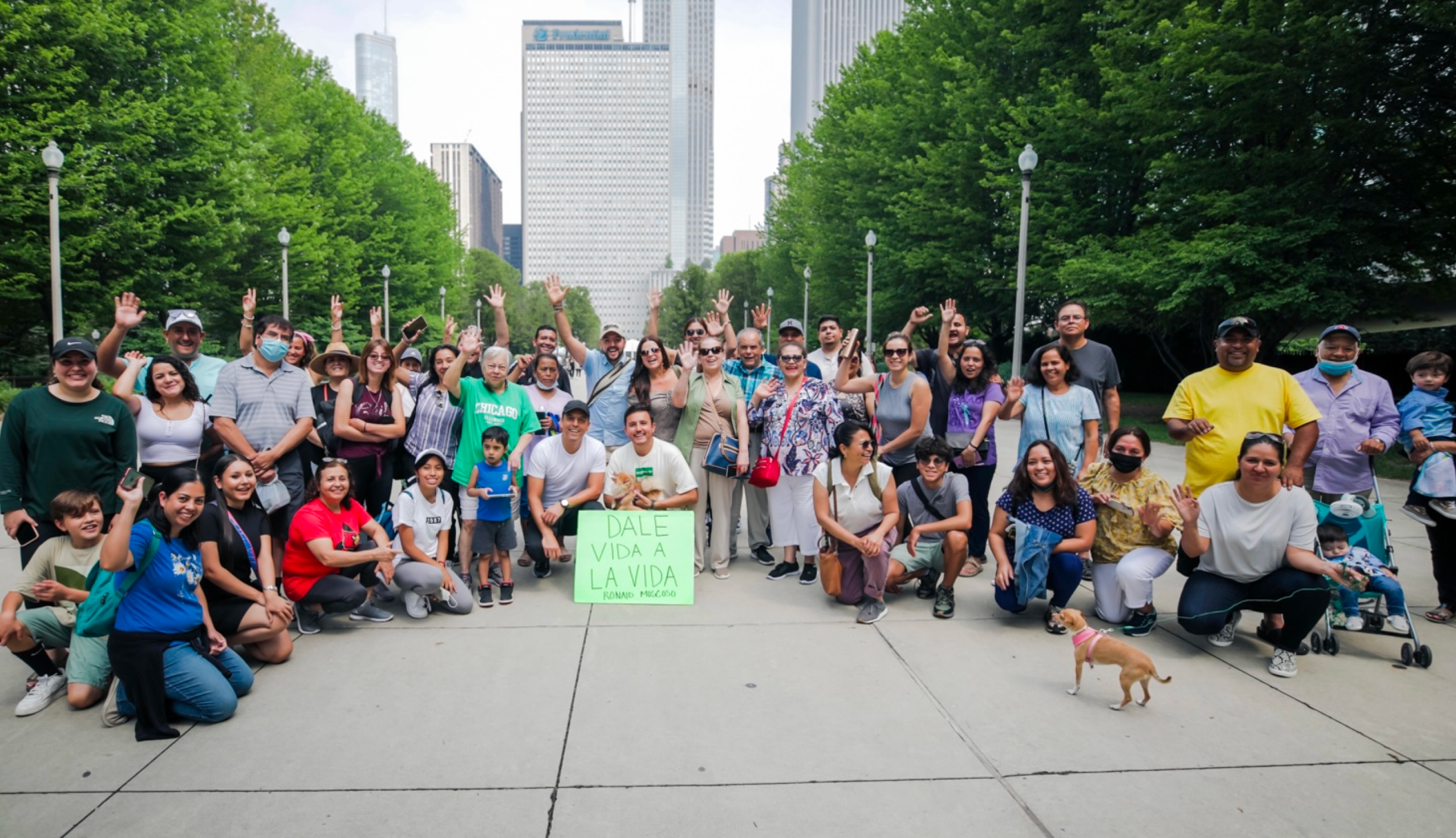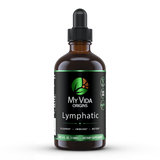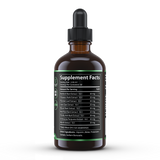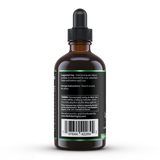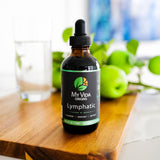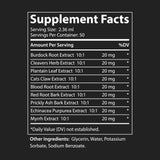Burdock Root Extract 10:1
Used in conditions caused by an overload of toxins such as throat and other infections, bills and rashes, and chronic skin problems. In Germany and Japan showed that the polyacetylenes, especially within the
free root, have an antibiotic effect. The root helps eliminate waste products in chronic skin and arthritic conditions. Stimulates lymphatic drainage and
promotes the removal of waste and toxins from the lymphatic system.†
Cleavers Herb Extract 10:1
Medicinal Actions & Uses A valuable diuretic, cleavers is often taken for skin diseases such as seborrhea, eczema, and psoriasis; for swollen lymph glands; and as a general detoxifying agent in serious illnesses such as cancer. Cleavers is a gentle lymphatic tonic that help improve lymphatic circulation and reduce lymphatic congestion. Cleavers is generally considered to be the best lymphatic tonic. It is particularly effective in reducing glandular swellings in the neck and armpits.†
Plantain Leaf Extract 10:1
Common plantain contains iridoids (such as aucubin).
flavonoids (including apigenin), tannins, plant acids, and mucilage. Aucubin increases uric acid excretion by the kidneys; apigenin is anti-inflammatory. Cleavers is a gentle lymphatic tonic that may help improve
lymphatic circulation and reduce lymphatic congestion. Plantain leaf is has anti-inflammatory properties and supports the lymphatic system in reducing inflammation and swelling.†
Cats Claw Extract 10:1
Cat's Claw is known for its immune-boosting properties. It helps enhance the overall function of the lymphatic system by supporting immune responses. Cat's claw contains pentacyclic oxindole alkaloids (POA), tetracyclic oxindole alkaloids (TOA) in one chemotype only, triterpenoid glycosides, sterols, flavonoids, and tannins, including epicatechin and
proanthocyanidins. Known by the Ashaninka and other indigenous peoples of central Peru for its power in regulating illness, cat's claw has been used since the earliest times to treat serious illness, from asthma and
diabetes to arthritis and more.†
Blood Root Extract 10:1
Blood Root has antimicrobial properties and assist in
detoxifying the lymphatic system by aiding in the removal of pathogens and toxins.
Bloodroot contains isoquinoline alkaloids, notably sanguinarine (1%), and many others, including berberine. Sanguinarine is a strongly expectorant substance that also has antiseptic and local anaesthetic properties.
History & Folklore: Bloodroot was a traditional remedy of Native Americans, who used it to treat fevers and rheumatism. From 1820 to 1926, bloodroot was listed as an expectorant in the Pharmacopoeia of the
United States.
In contemporary herbal medicine, bloodroot is chiefly employed as an expectorant, promoting coughing and the clearing of mucus from the respiratory tract. The plant is prescribed for chronic bronchitis and-as it also has an antispasmodic effect--for asthma and whooping cough.†
Red Root Bark Extract 10:1
The root is very bitter and astringent and has been used as a mouthwash. It is considered a Lymphatic Alterative and can be used in all forms of sluggish lymph function. Red Root Bark is often used as a
lymphatic decongestant. It helps reduce lymphatic congestion and improve lymph flow.
The red root can support the lymphatic system. In addition, it can help the spleen and many disorders related to the lymphatic system.†
Prickly Ash Bark Extract 10:1
Prickly Ash's traditional use was to stimulate the body
when it was feeling sluggish and still today plays an important role in this manner. Eclectic physicians used it in a similar way to Cayenne, but suggested that it is slower acting and longer lasting. Prickly ash is a great
addition to a formula when a tonifying and supportive alterative is needed to rejuvenate the body. Prickly ash is often used to support normal circulation of blood in its vessels due to its inherent stimulatory effect on
the body. As a result, it is often used as a supportive aid when more blood is needed in a certain area of the body. Because it supports blood flow in the body, prickly ash is also used to promote healthy joints, particularly when there is stagnant lymph that needs to be re-circulated to promote optimal levels of inflammation.†
Echinacea Purpurea Extract 10:1
Clinical research into echinacea has confirmed that it increases the number of white blood cells and their strength of action, although its precise mode of action on immune function is not well understood. The polysaccharides inhibit the ability of viruses to take over cells, while the alkylamides are antibacterial and antifungal. Research supports the use of echinacea to prevent colds and respiratory infections resulting from air travel. Not all clinical trials have found positive effects, possibly because in some cases too low a dose of echinacea was used to promote optimal
levels of inflammation. Also been shown to specifically stimulate lymphocyte and dendritic cell activity as well as support organs of the lymphatic system such as the thymus and spleen.†
Myrrh Extract 10:1
Egyptian research confirms that myrrh is a key treatment for certain parasitic infections, notably liver flukes and schistosomiasis (both common and serious waterborne diseases). In one clinical study, myrrh extract cleared all signs of liver fluke infection within 6 days, with patients remaining clear 3 months later. It is also being studied as a gastric ulcer remedy and for anti-cancer properties. The gum resin has thyroid-stimulating activity. In Ayurvedic medicine, is considered a tonic and aphrodisiac and to cleanse the blood. It has a reputation for improving intellect. Myrrh is also taken for irregular or painful menstruation. Myrrh promotes an increase of white blood cells in support of the immune system.†





 Cleansing the Body
Cleansing the Body
 Fortifying the Immune System
Fortifying the Immune System
 Comprehensive Detoxification
Comprehensive Detoxification




